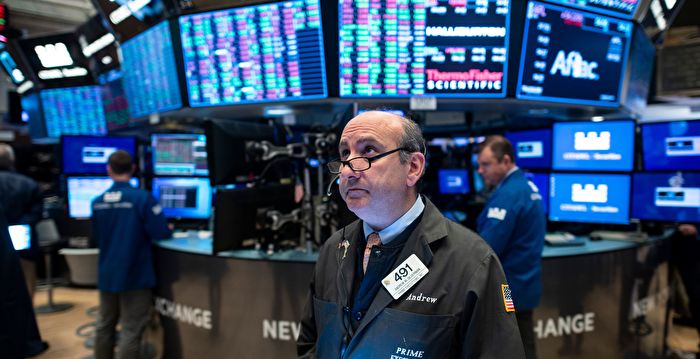[The Epoch Times, May 21, 2022](The Epoch Times reporter Lin Yan comprehensive report) On Friday (May 20), the S&P 500 fell into bear market territory for the first time since the 2020 pandemic, more than the record in January The high fell by more than 20%. At present, among the three major stock indexes, only the Dow Jones has not fallen into a bear market, and the Nasdaq has fallen by more than 30% from its high in November last year.
In this round of continuous decline in US stocks, the Dow has been in a downward direction for the eighth consecutive week. This is the longest losing streak since 1923 and is close to the peak of the Great Depression. The S&P and Nasdaq have fallen for seven straight weeks, heading for their longest losing streak since the dotcom bubble burst in 2001.
The Wall Street Journal said U.S. stocks haven’t fallen for such a long time in decades. Investors said behind the rout was growing concern about the health of the U.S. and global economies. In the first few months of the year, money managers feared that the Fed’s rate hikes would take big toll on the already priced stocks that have propelled the market sharply over the past few years. As a result, investors fled stocks in tech companies and pulled billions of dollars from funds.
The stock market turmoil this week has mostly come from retailers. Dismal earnings reports from retailers led by Walmart and Target highlighted the economic risks in a high inflation environment, making the market more worried that the Federal Reserve is difficult to achieve a soft landing, which has become the main reason for the decline in US stocks this week.
The retail giant’s report said company profits were hurt by rising costs and supply chain disruptions, leading to the worst one-day drop in stocks since the 1987 Black Monday crash. Also, stocks from banks to REITs to grocery chains fell.
There are concerns about the companies’ ability to cope with inflation and the willingness of consumers to pay higher prices. Investors worry that it will take quite a long time before consumers feel confident spending money again.
The sharp sell-off sent a strong message to investors and analysts: If there is an area of safe investment, there are few such places in the stock market this year.
“It’s clear that in a very short period of time we’ve gone from a pandemic to an inflation scare to now a serious concern about growth,” said Brian Levitt, global market strategist at Invesco.
Markets are unlikely to stabilize until the Fed convinces investors that it can tighten monetary policy and keep inflation in check without tipping the U.S. economy into recession, analysts said.
“We still need more evidence to convince the market that a soft landing is possible,” said Arun Sai, multi-asset strategist at Pictet Asset Management. He said the Fed’s goal should be to allow the economy to relax. Slow enough to contain price pressures, but not enough to cause a recession.
U.S. Treasuries rebounded on Friday, benefiting from safe-haven demand from investors. The yield on the benchmark 10-year Treasury note fell to 2.785% on Friday from 2.854% on Thursday, falling for a third straight day.
Kiran Ganesh, multi-asset strategist at UBS, said most S&P 500 companies beat earnings estimates for the quarter, but what is less clear is the months ahead for those companies how will it perform.
“The problem is that starting next quarter, we will see the full impact of the jump in oil prices and the war in Ukraine.”
The most recent bear market was in March 2020, when the S&P 500 fell into a technical bear market for 33 days and rebounded to an all-time high again, thanks to investors betting that people stay at home during the pandemic and the performance of Internet companies is expected to get a boost market confidence.
Responsible editor: Li Yuan#
